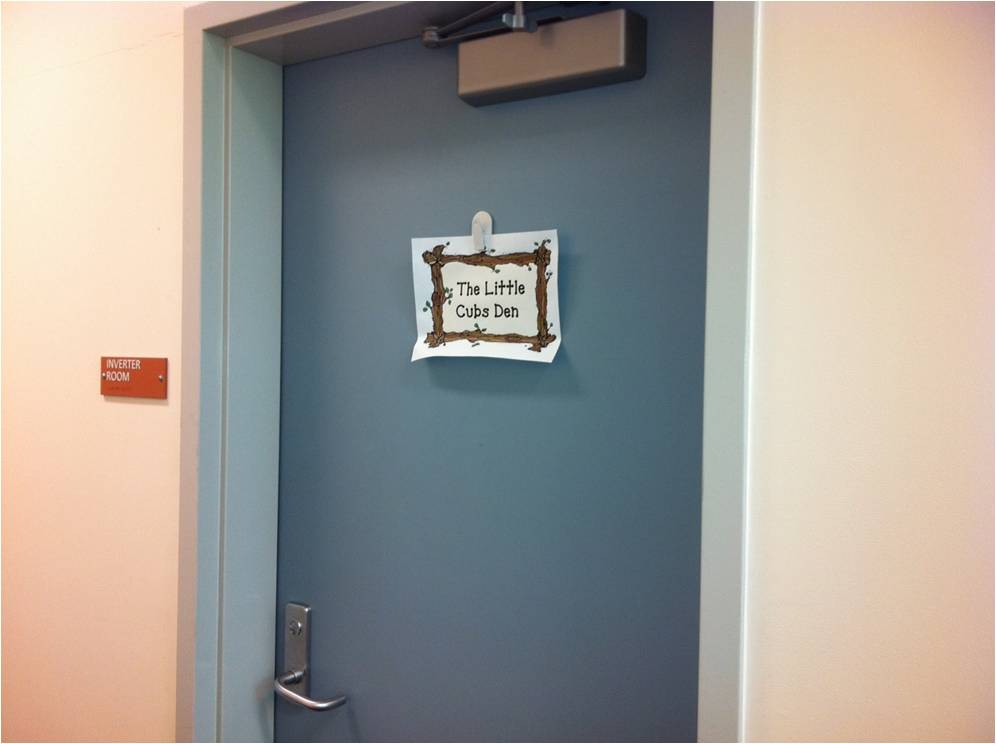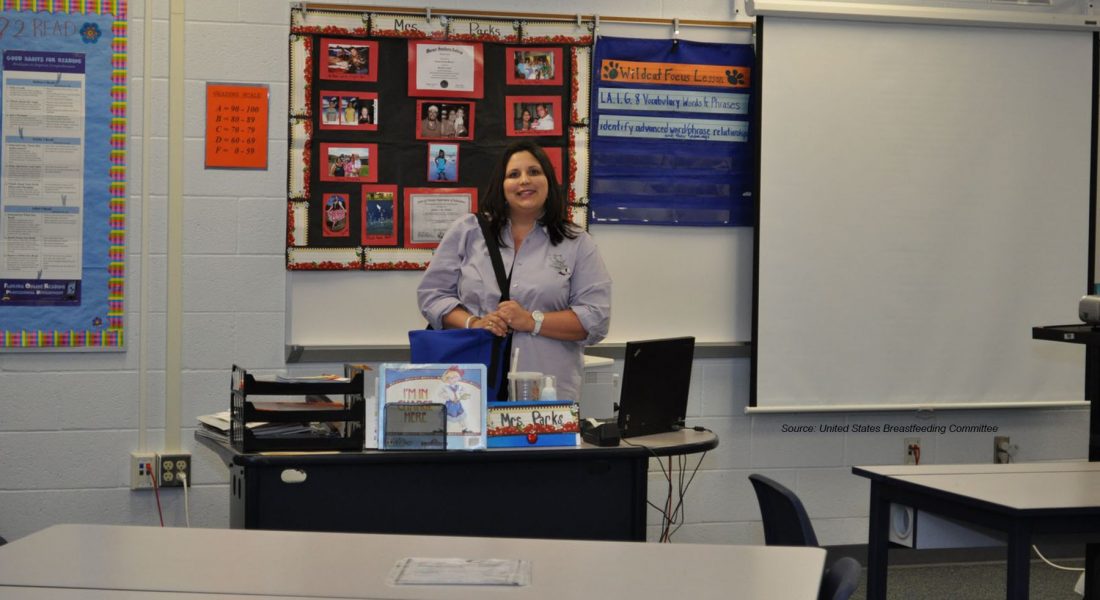Why Lactation Accommodation is Important
Returning to work or school after the birth of a baby is a critical transition point. Many mothers choose to stop breastfeeding at this time due to concerns about not being accommodated at work or school. While other mothers may prolong their leave or not return to work or school at all if they perceive an environment that won’t support them.
Schools that provide a supportive environment for breastfeeding enjoy many proven benefits such as:
- Lower turnover rate
- Lower absenteeism
- Higher employee loyalty
- Higher graduation rates
- Healthier future students!

Supporting Lactation Accommodation in Schools
Schools are an important setting to consider in the promotion of lactation accommodation for both their employees and students.
LSE has taken a collective impact approach in providing assistance to both school districts and higher education institutions across San Diego County. The main focus has been on the adoption and implementation of lactation accommodation policies as well as systems and environmental change strategies.
LSE has provided guidance and support through the following:
- Assessment of current needs and development of an implementation plan
- Sample policy and support of policy development and/or revision and adoption
- Implementation of policy and logistics to support both employees and students
- Training of human resource staff, superintendents, principals, and teachers
- Technical assistance with lactation room design, creative space solutions, and creating a supportive environment
- Resources for both employees, schools, and students
Getting Started

Assessment and Implementation
Start with an initial assessment of your school district, individual school or higher education institution to determine how lactation accommodation is currently being supported, then identify areas for improvement. Develop an implementation plan to determine the next steps and identify key stakeholders to lead these efforts. Find champions in different departments to be a part of the team.
School Districts
Laws
Employees and students at school districts have the right to be accommodated to pump breast milk when they return from leave.
Both federal and California state laws declare that employers need to accommodate lactating employees by providing a private space that is not a restroom and reasonable break time. New California law (SB 142), enhances the previous law by requiring employers to have a policy and outlining mandatory features for lactation rooms. In addition, it changes the ability to claim exemptions and expands the available penalties.
Students are also entitled to the same accommodations and are covered under Title IX and California state law AB 302.
Policy
Policy not only shows compliance with the laws, but also serves as a directive to let employees and students know how they should be accommodated.
LSE worked with the San Diego County Office of Education and the California School Boards Association to support the adoption of a sample policy for lactation accommodation for both employees (BP 4033) and students (BP 5146). Sample policy can be used by any school district in California to support their efforts.
Communication and Training
Support for breastfeeding and policies should be communicated to employees and students upon entry, before maternity leave, and upon return from leave. Annual communication school-wide is best practice. August is Breastfeeding Awareness Month and often times the start for many schools. This is a great time to send out reminders about support for breastfeeding and lactation accommodation.
Trainings for superintendents, Human Resource staff, principals and teachers should be provided to inform them of laws, policies and procedures, how to accommodate lactating employees and students, available lactation spaces and resources. If your school has a Pregnant and Parenting Student program they may have additional resources.
Space
Employees and students should NEVER be asked to pump in a restroom and should be provided with a private space that is in close proximity. While a dedicated lactation room is ideal, a temporary space such as a classroom, storage closet, or an office can also be used.
Under the new California law SB 142, current requirements for space have been expanded to include the following:
Higher Education Institutions
Laws
Employees and students at higher education institutions such as universities, community colleges and state supported schools have the right to be accommodated to pump breast milk when they return from leave.
Both federal and California state laws declare that employers need to accommodate lactating employees by providing a private space that is not a restroom and reasonable break time. New California law (SB 142), enhances the previous law by requiring employers to have a policy and outlining mandatory features for lactation rooms. In addition, it changes the ability to claim exemptions and expands the available penalties.
Students are entitled to the same accommodations and are covered under Title IX and California law AB 2785.
Policy
Adoption of a lactation accommodation policy is important for many reasons. A policy will help support sustainability and provide directives to faculty, staff and students. Communication of support for lactation accommodation is easier when it is in writing. And a written policy shows that your institution is in compliance with both federal and state laws.
Employee lactation accommodation policies should be formalized with Human Resources, while student policies will vary in their location. Written student policies or procedures may be published in student handbooks or live with Title IX or ADA.
Sample policy can be used to support employees. A policy should also be adopted to support students. The Pregnant Scholar has a comprehensive sample policy for students.
Communication and Training
Support for breastfeeding and policies should be communicated to students, staff, and faculty upon entry, before maternity leave, and upon return from leave. In addition, annual communication is best practice. August is Breastfeeding Awareness Month and often times the start for many schools. This is a great time to send out reminders about support for breastfeeding and lactation accommodation.
Training should be provided to Human Resources, upper management, and faculty on how laws, policy and procedures,policies and procedures, how to accommodate lactating employees and students, location of lactation rooms and available resources. If your campus has a Women’s Center, Gender Equity Center, or Student Parent Center they may have additional resources to support employees and students.
Space
Employees and students should NEVER be asked to pump in a restroom and should be provided with a private space that is in close proximity. Multiple lactation rooms should be available in different locations across campus. Any new building plans should also include a lactation room.
Under the new California law SB 142, current requirements for space have been expanded to include the following:

